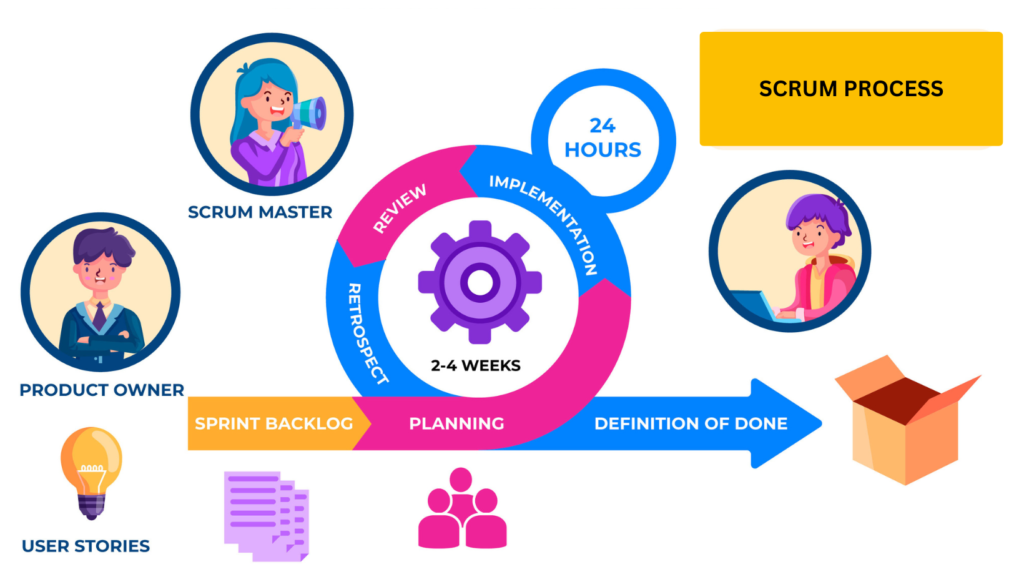
Introduction:
In the fast-paced landscape of software engineering, where agility and adaptability are paramount, the Scrum framework has emerged as a beacon of efficiency and collaboration. In this blog, we will delve into the key aspects of Scrum, exploring the intricacies of the Scrum process, pillars, model, calls, and principles. Let’s embark on a journey to understand how Scrum revolutionizes the software development paradigm.
Scrum Process:
At the heart of Scrum lies a well-defined process that encapsulates the iterative and incremental approach to software development. The Scrum process is characterized by Sprints – time-boxed iterations, typically lasting two to four weeks. Within each Sprint, a cross-functional team collaborates to deliver a potentially shippable product increment. Daily stand-up meetings, or Scrum calls, keep the team synchronized, addressing impediments and fostering a culture of continuous improvement.

Scrum Pillars:
Scrum is built upon three foundational pillars, each contributing to the framework’s strength and effectiveness.
- Transparency:
Transparency is the bedrock of Scrum. The entire process is visible to all stakeholders, ensuring that everyone has a clear understanding of the project’s status, challenges, and goals.
- Inspection:
Regular inspection of the product and the process is embedded in Scrum. This allows the team to identify issues early, adapt quickly, and maintain a focus on delivering high-quality products.
- Adaptation:
Scrum embraces change. The ability to adapt to evolving requirements and feedback is crucial for success. Continuous improvement is not just encouraged but inherent in the Scrum philosophy.
Scrum Model in Software Engineering:
The Scrum model in software engineering follows a cyclical pattern of planning, execution, review, and adaptation. Starting with a product backlog, the team plans the Sprint, undertakes development, holds a Sprint Review, and reflects on the experience in the Sprint Retrospective. This iterative cycle ensures that the product evolves based on feedback and changing priorities.
Scrum Calls:
Scrum calls, or Daily Stand-ups, are the heartbeat of the Scrum process. These short, daily meetings provide team members with an opportunity to synchronize, discuss progress, and identify any impediments. The emphasis is on collaboration and quick issue resolution, keeping the team aligned and focused on Sprint goals.

Scrum Principles:
Scrum is guided by a set of principles that underpin its philosophy and guide practitioners in their implementation.
- Empirical Process Control:
Scrum leverages transparency, inspection, and adaptation to control the variability inherent in software development projects.
- Self-Organization:
Teams are encouraged to self-organize, fostering a sense of ownership and accountability among team members.
- Collaboration:
The collaborative nature of Scrum promotes open communication and knowledge sharing, breaking down silos and enhancing cross-functional collaboration.
Conclusion:
In conclusion, Scrum in software engineering is a holistic framework that combines a well-defined process, strong pillars, an iterative model, effective calls, and guiding principles. Understanding the interplay of these elements is essential for successfully implementing Scrum and reaping the benefits of agility, adaptability, and improved project outcomes. Whether you’re new to Scrum or a seasoned practitioner, embracing the essence of Scrum can undoubtedly transform the way you approach software development.








